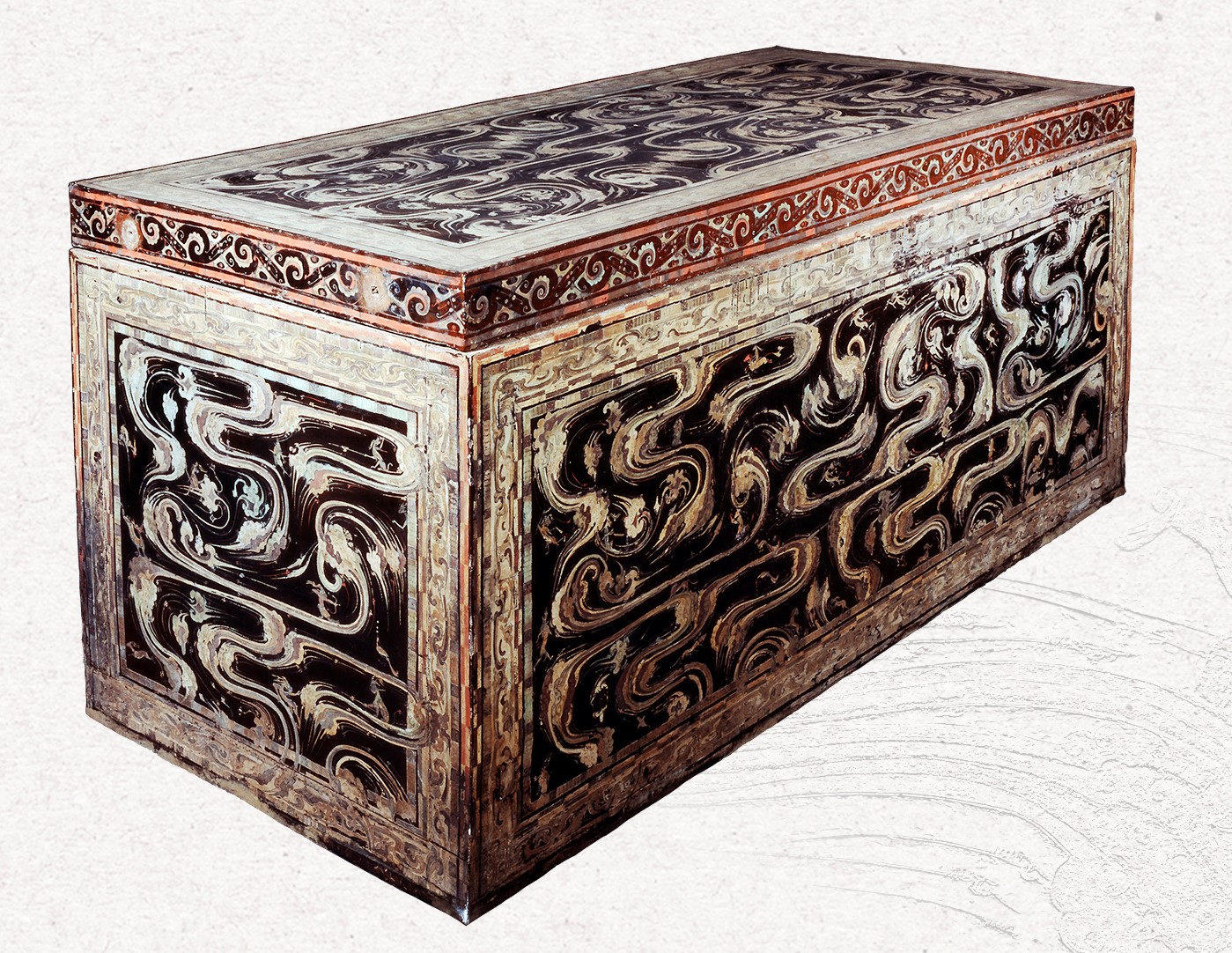"Painted Lacquered Coffin with Black Background" and "Painted Lacquered Coffin with R


The painings unearthed from Western Han Dynasty Tombs at Mawangdui, Changsha, Hunan Province, can be regarded as masterpieces of tomb chamber art from the early Han Dynasty. These tombs were built in the early 2nd century BC, and the wooden coffins inside the tombs were composed of multiple layers. Unlike the tombs of the Eastern Zhou Dynasty, the tombs at Mawangdui are adorned with complex paintings almost everywhere, such as on banners, coffin surfaces and hanging objects on the tomb walls... The painted images on various objects form a "painting program," which complements the functions and symbolic meanings of the funerary architecture. In Tomb No. 1, there are four nested coffins of different sizes. The first layer, which is also the outermost layer, is completely painted in black to represent death and the underworld. Therefore, the painted images on all the layers sealed inside are not intended for the living to appreciate, but are designed for the deceased, with themes that hope the deceased will be blessed in the underworld and ascend to heaven. The second layer also has a black background, but it is decorated with flowing cloud patterns and divine beings and auspicious birds and animals wandering in the vast universe. At the lower part of the front end of the coffin, a very small figure is painted, but only her upper body is depicted, apparently indicating that she is entering this mysterious world. The third layer of the coffin is painted with a bright red background, and the decorative patterns include some divine beasts and winged immortals, which are painted on both sides of Kunlun Mountain composed of three peaks. On the fourth layer, the innermost layer of the coffin, the excavators discovered a silk painting measuring about two meters long.
This piece is compiled from the Chinese edition of Three Thousand Years of Chinese Painting by Foreign Languages Press and Yale University Press, translated by Chen Ying.
Related articles
-
 Exhibition highlights two masters' pursuit of beauty
Exhibition highlights two masters' pursuit of beautyMore
-
 Digital screen in Hangzhou sets to celebrate dynamic digital art
Digital screen in Hangzhou sets to celebrate dynamic digital artMore
-
 Works by late artist Huang Yongyu
Works by late artist Huang YongyuMore
-
 Calligrapher Huang Tingjian: Biographies of Lian Po and Lin Xiangru
Calligrapher Huang Tingjian: Biographies of Lian Po and Lin XiangruMore
-
 Moving forward-themed exhibition kicks off in Beijing
Moving forward-themed exhibition kicks off in BeijingMore
-
 Pictures with character
Pictures with characterMore
